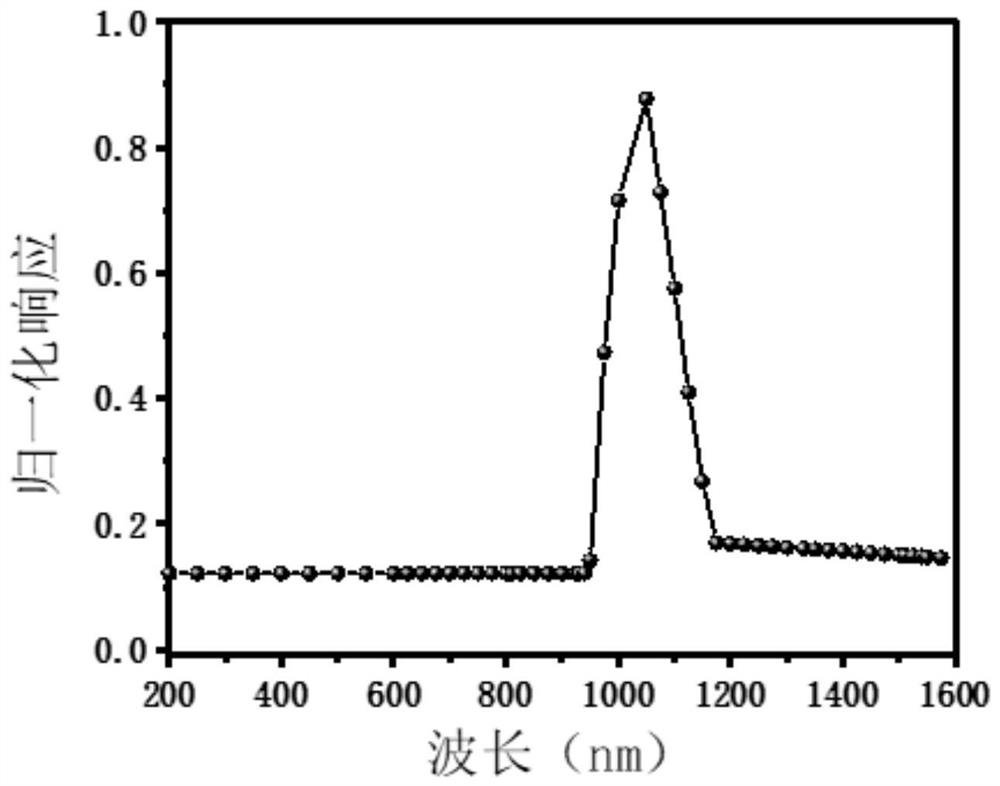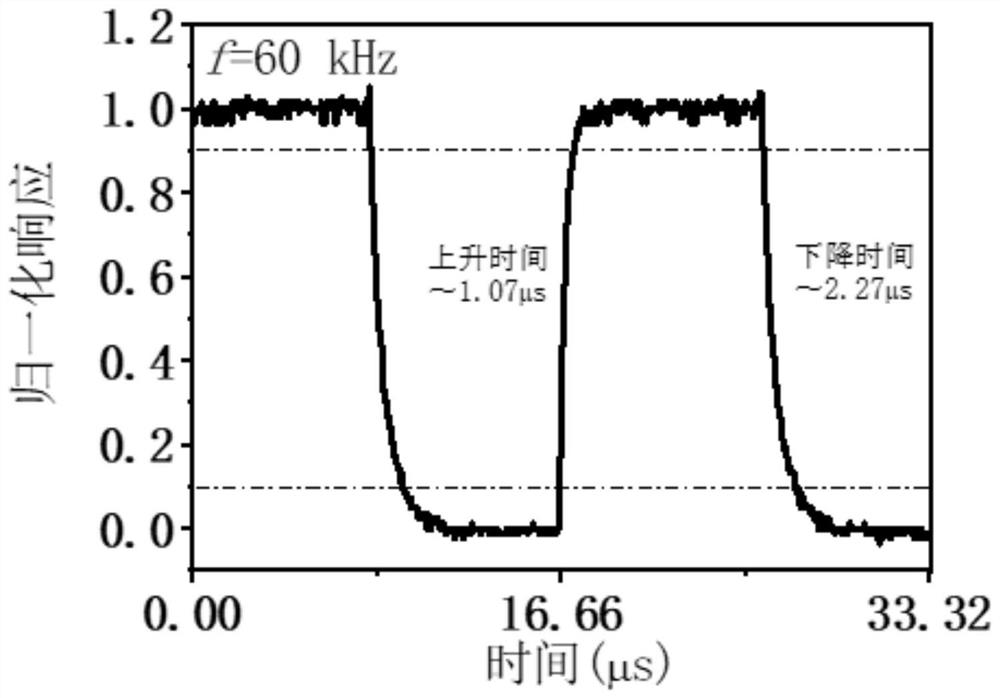Silicon-based micro-cavity narrow-band near-infrared photoelectric detector
A near-infrared optical and electrical detector technology, which is applied to circuits, electrical components, semiconductor devices, etc., can solve the problems of high cost, complicated detector preparation methods, and difficult integration of electronic devices, etc., and achieve low cost, high-efficiency detection, and response fast effect
- Summary
- Abstract
- Description
- Claims
- Application Information
AI Technical Summary
Problems solved by technology
Method used
Image
Examples
Embodiment 1
[0025] Such as figure 1 As shown, the silicon-based microcavity narrow-band near-infrared photodetector of this embodiment uses a single crystal silicon substrate 2 as a base, and the upper surface of the single crystal silicon substrate 2 is etched into a silicon microhole array structure. An upper insulating layer 1 is provided on the hole array; a layer of graphene film 3 is transferred on the lower surface of the single crystal silicon substrate 2 to form a graphene-silicon Schottky heterojunction; a lower surface is provided on the lower surface of the graphene film 3 An insulating layer 4; a metal reflective layer 5 is provided on the lower surface of the lower insulating layer 4;
[0026] Top electrode 6 is arranged on the upper surface of monocrystalline silicon substrate 2, and bottom electrode 7 is arranged on the lower surface of graphene film 3, and top electrode 6 forms ohmic contact with monocrystalline silicon substrate 2, and bottom electrode 7 and graphene Th...
Embodiment 2
[0041] Such as figure 1 As shown, the silicon-based microcavity narrow-band near-infrared photodetector of this embodiment uses a single crystal silicon substrate 2 as a base, and the upper surface of the single crystal silicon substrate 2 is etched into a silicon microhole array structure. An upper insulating layer 1 is provided on the hole array; a layer of graphene film 3 is transferred on the lower surface of the single crystal silicon substrate 2 to form a graphene-silicon Schottky heterojunction; a lower surface is provided on the lower surface of the graphene film 3 An insulating layer 4; a metal reflective layer 5 is provided on the lower surface of the lower insulating layer 4;
[0042] Top electrode 6 is arranged on the upper surface of monocrystalline silicon substrate 2, and bottom electrode 7 is arranged on the lower surface of graphene film 3, and top electrode 6 forms ohmic contact with monocrystalline silicon substrate 2, and bottom electrode 7 and graphene Th...
PUM
| Property | Measurement | Unit |
|---|---|---|
| thickness | aaaaa | aaaaa |
| diameter | aaaaa | aaaaa |
| thickness | aaaaa | aaaaa |
Abstract
Description
Claims
Application Information
 Login to View More
Login to View More - R&D
- Intellectual Property
- Life Sciences
- Materials
- Tech Scout
- Unparalleled Data Quality
- Higher Quality Content
- 60% Fewer Hallucinations
Browse by: Latest US Patents, China's latest patents, Technical Efficacy Thesaurus, Application Domain, Technology Topic, Popular Technical Reports.
© 2025 PatSnap. All rights reserved.Legal|Privacy policy|Modern Slavery Act Transparency Statement|Sitemap|About US| Contact US: help@patsnap.com



